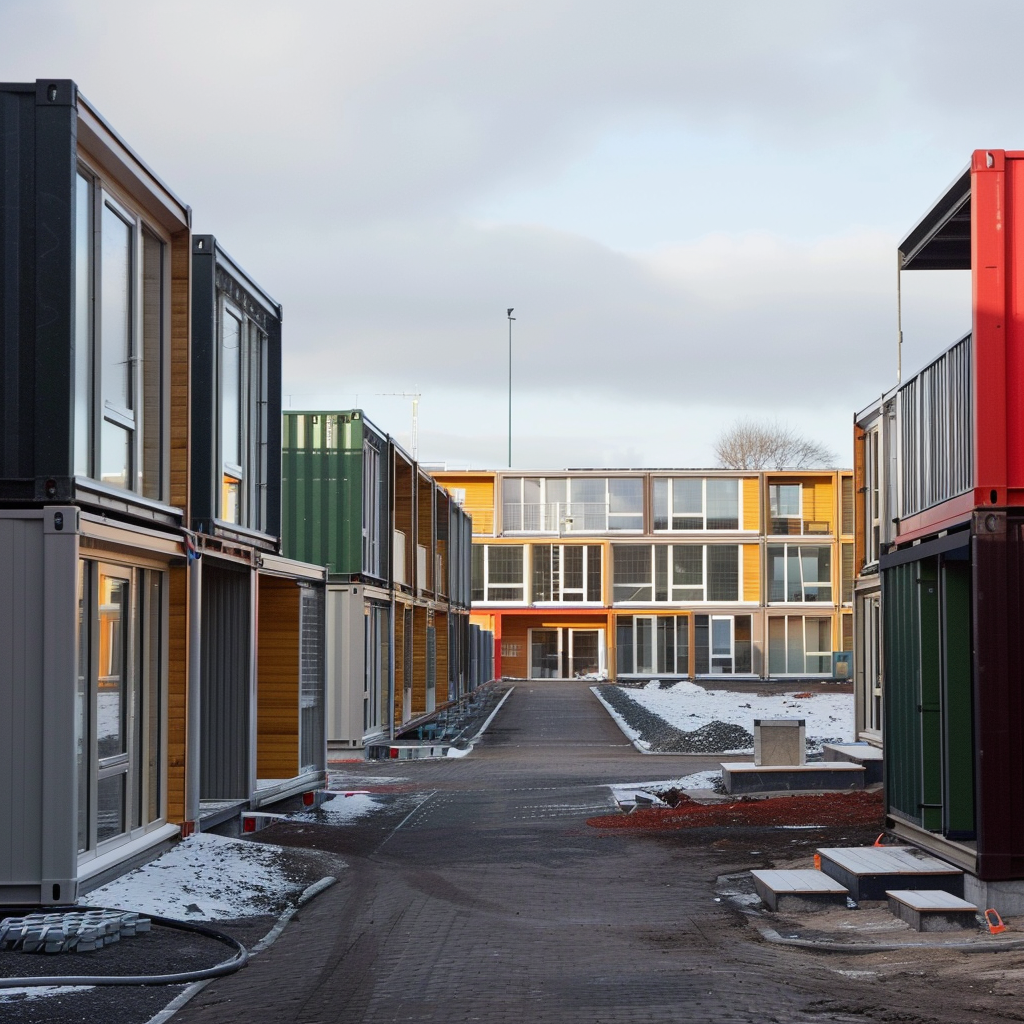
1. Versatility and flexibility: Versatility and flexibility are two key characteristics that make modular buildings a popular choice among construction projects. Unlike traditional buildings, which have a fixed design and layout, modular buildings can be easily customised and configured to suit a variety of needs. For example, if a school needs additional classrooms, modular buildings can be designed and built to fit the specific requirements of the school. They can also be easily modified or expanded in the future if needed. This versatility and flexibility make them an ideal option for projects with changing needs or diverse use cases. Moreover, modular buildings can also be easily relocated without compromising on their structural integrity. This makes them a great choice for projects that require a temporary structure or for businesses that may need to move locations in the future.
2. Cost-effectiveness: Modular buildings offer a cost-effective alternative to traditional construction methods. This is because prefabricated building components can be produced in a factory setting, reducing the time and labor costs associated with on-site construction. Additionally, since modular buildings are designed for easy assembly, they require fewer workers and can be completed in a shorter amount of time. This not only reduces labor costs but also minimises the amount of disruption to surrounding areas. Moreover, the design and construction process of modular buildings are highly efficient and streamlined, helping to reduce overall costs. And with energy-efficient designs, modular buildings can also save on long-term operational costs for businesses.
3. Sustainability: Sustainability is a growing concern in the construction industry, and modular buildings offer a more environmentally friendly option. They are built using eco-friendly and recyclable materials, making them a sustainable choice for construction projects. Furthermore, since modular buildings are prefabricated off-site, they generate less waste compared to traditional construction methods. This also means less noise and pollution during the construction process, making them a more sustainable option for both people and the environment.
4. Quality and durability: Modular buildings are built to the same high standards as traditional buildings, if not higher. Because they are constructed in a controlled factory setting, there is greater consistency and precision in the building process, resulting in higher quality structures. Moreover, modular buildings are designed to withstand various weather conditions and are built with durable materials to ensure longevity. This makes them a reliable option for permanent structures and ensures a longer lifespan compared to temporary buildings.
5. Time-efficient: One of the main advantages of modular buildings is their time efficiency. With off-site production and easy assembly on-site, modular buildings can be completed in a fraction of the time it takes to construct a traditional building. This makes them an ideal choice for projects with tight deadlines or urgent space needs. For example, schools can quickly add modular classrooms to accommodate a growing student population, or businesses can quickly expand their office space to accommodate new employees.
6. Lower disruption: Traditional construction can be disruptive to the surrounding areas with heavy machinery, noise, and dust. However, with modular construction, the majority of the building process is completed off-site, resulting in minimal disruption to the surrounding environment. This lower level of disruption makes modular buildings a great option for projects in busy urban areas or sensitive environments, such as near schools, hospitals, or residential areas.
7. Design options: Modular buildings offer a wide range of design options, allowing for creativity and innovation in building solutions. They can be customised to fit any aesthetic or functional requirements, and can also be designed to seamlessly blend in with existing buildings. Additionally, the modular construction process allows for greater design flexibility, as building components can be easily modified or expanded in the future. This gives businesses and organisations the opportunity to create a unique and functional space that fits their specific needs.
8. Quality control: Since modular buildings are constructed off-site in a controlled factory setting, strict quality control measures are in place to ensure a high standard of workmanship and attention to detail. This results in a higher quality final product that meets or exceeds building codes and regulations.
9. Mobility: Mobility is another advantage of modular buildings. They can be easily transported and relocated, making them a great option for temporary or mobile structures. For example, they can be used for events, festivals, disaster response, or as temporary offices on construction sites.
10. Reduced waste: As mentioned earlier, modular buildings generate less waste compared to traditional construction methods. This is because building components are precision-cut to the required size, resulting in minimal material wastage. This not only makes modular construction a more environmentally friendly option, but it also helps to reduce costs and save time.
